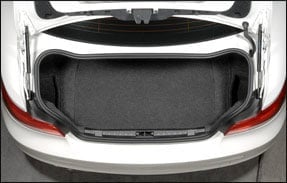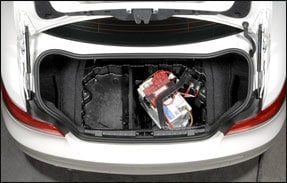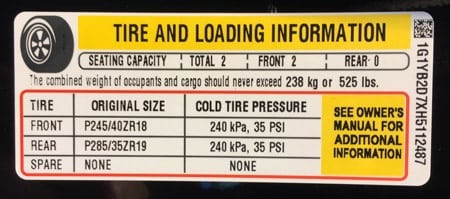Which vehicle parts go to the salvage yard 85% of the time without ever being used? If you haven't guessed by now, it's the spare tire, wheel, jack and tools. That's right, 85% of the time they will reach the end of the vehicle's life without ever having been used.
However, since the spare potentially represents one out of every five tires and wheels being manufactured for a given vehicle, it means up to 20% of the raw material and labor costs are being invested in a system that seldom gets used. And with the growing popularity of roadside assistance programs and cell phones, it's likely spare tires, wheels, jacks and tools will be used even less often in the future.
Spare tires are a cost to individual drivers and society in several ways:
First, the raw materials and labor costs associated with manufacturing spare tires, wheels, jacks and tools are included in the cost of the vehicle.
Second, they compete for room in the vehicle. They use space that could otherwise be devoted to a larger passenger cabin or more cargo capacity. Without a spare, designers have more flexibility in utilizing the vehicle's available space.
And finally, the weight of the spare tire, wheel, jack and tools reduce fuel economy throughout the vehicle's life. Sure, it may not be detectable on any one tank of fuel, but a 50-pound spare tire, wheel, jack and tools can reduce the vehicle's fuel economy by up to 1%. That means a 16 mpg SUV/light truck driven 150,000 miles during a 10-year lifetime would consume about 94 gallons of fuel just to carry the spare ($235 in fuel costs at $2.50/gallon). And even a more economical car that averages 35 mpg would still require 43 gallons of fuel during its 10-year, 150,000-mile lifetime ($107.50 in fuel costs at $2.50/gallon).
Does the trunk floor hide a spare tire, wheel, jack and tools or has the space underneath been devoted to the placement of other components?
In an effort to increase trunk size and component efficiency while reducing weight and cost, many vehicle manufacturers have deleted a standard spare tire, wheel, jack and tools. Sometimes drivers who don't feel comfortable without the security of a spare can include one as an option when placing an order for a new car; however most of the time their only option will be to carry a small compressor that can inject emergency tire sealant in case of a flat.
Buying a new car (or new-to-you used vehicle)? While you can look in a car's trunk or under a truck's bed, it may be easier to simply look at the tire placard on the driver's door jamb. Today's tire placards are vehicle-specific, listing the vehicle identification number (VIN) and confirming the Original Equipment (O.E.) tire sizes it was equipped with when it left the assembly plant. If the placard lists NONE (as shown above), it never had a spare and may not even have room to store one.
Look before you buy; it may keep you from being surprised the first time you discover there isn't a spare tire, wheel, jack and tools.
Was this post helpful?
408 of 949 people found this post helpful




